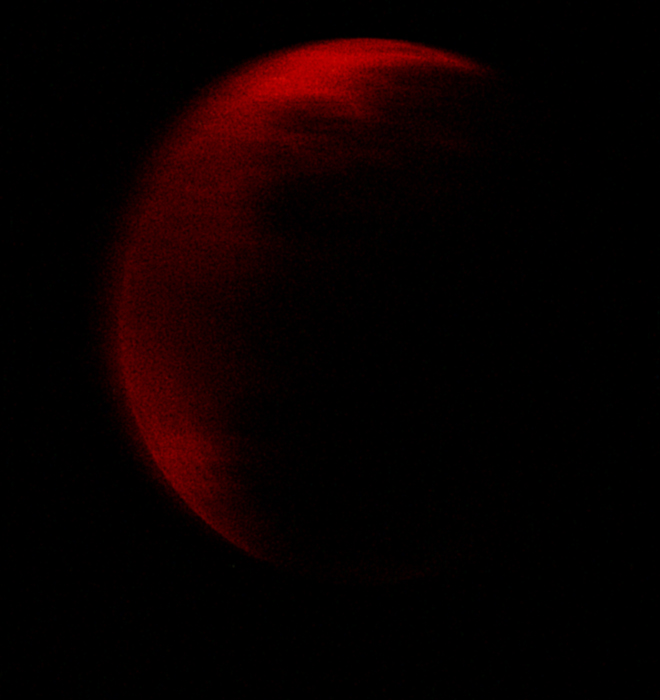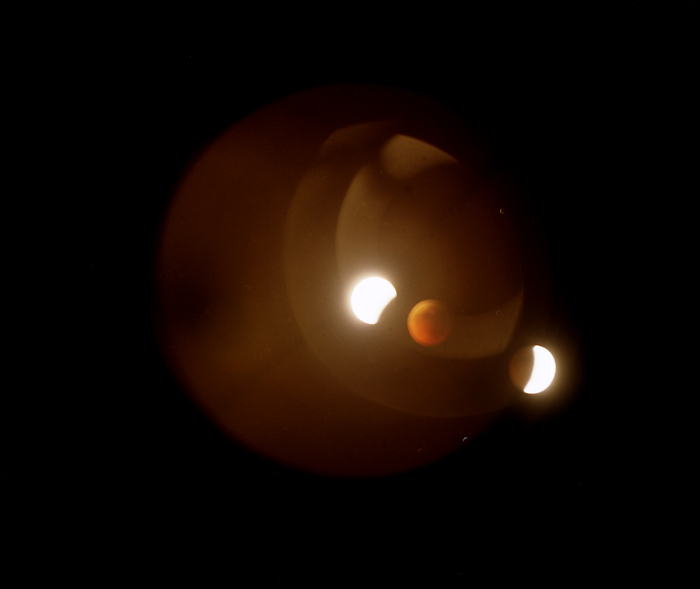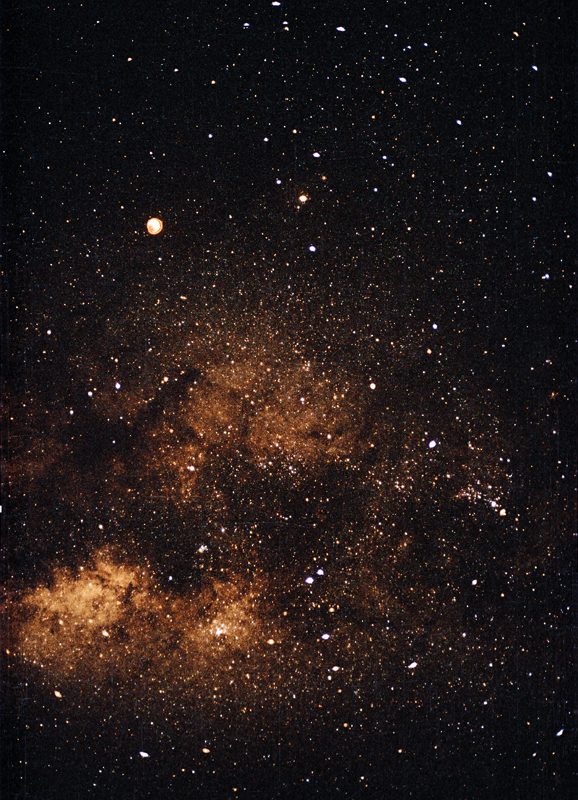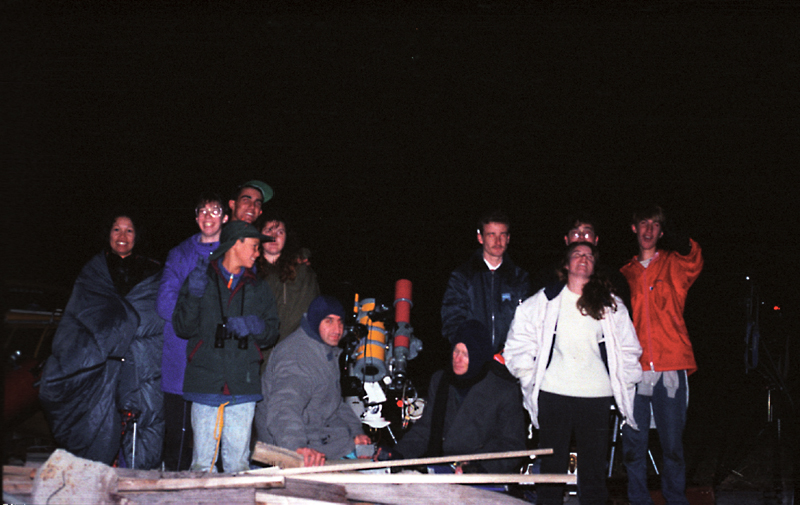
10 seconds exposure, Fuji Super HG V 400 film.
17.5" f/4.5 refractor at prime focus.
June is the middle of winter in the southern hemisphere, and for Perth, it is one of the wettest months of the year. So when making plans to observe the total eclipse of the Moon on June 4, the members of the astronomy club to which I belonged, decided to head inland where the skies had a greater chance of being clear. In the end, this proved to be a good decision as the skies were perfect. However there was a stiff breeze blowing and it turned out to be one of the coldest nights observing I had before moving to Minnesota! A total of 12 observers made the 2 hour journey to the observing site and were rewarded with a very enjoyable night.
My main objective for the eclipse was to use the club's 17.5" dobsonian to make crater timings, and this regard, the eclipse was one of my most successful as I obtained # timings during ingress and # during egress. During totality, I tried to use the 17.5" to photoraph the eclipsed Moon. I also tried to make a mutiple exposure using a 6" schmidt-newtonian, showing the motion of the Moon through the Earth's shadow. Unfortunately, these did not work out very well. The eclipse was the darkest I have yet seen. During totality, the Moon was almost invisible to the naked eye. As a result, long exposures were required to photograph it. Trying to hold a camera up to an undriven dobsonian just did not work! All of the photographs were either badly underexposed or trailed. For the multiple exposure, I was unable to make the exposures short enough during the partial stages and as a result there was considerable internal reflection.

Near mid-totality. The darkness of the Moon is clearly evident in this exposure, as is the problem of trying to take photographs with an undriven dobsonian mount!

To make this photograph I had the film cover open at all times and to make each exposure, I simply removed the telescope cap. Unfortunately it was not possible to do this sufficiently quickly for the partial stages. Another problem was as a result sharing the scope with other observers, the focus was slightly out for the exposure during totality!

A wide field photograph of totality. The Moon is on the Scorpius-Ophiuchus border. Antares is the bright star to the right of the Moon. The bright patch in the Milky Way near the bottom of the photograph is the open cluster M7.

The happy (if cold) observers at the end of the eclipse.